Classic almond flour shortbread biscuit recipe without egg
These classic almond flour shortbread rounds are deliciously buttery and will melt in your mouth. A perfect addition to your afternoon cup of tea.
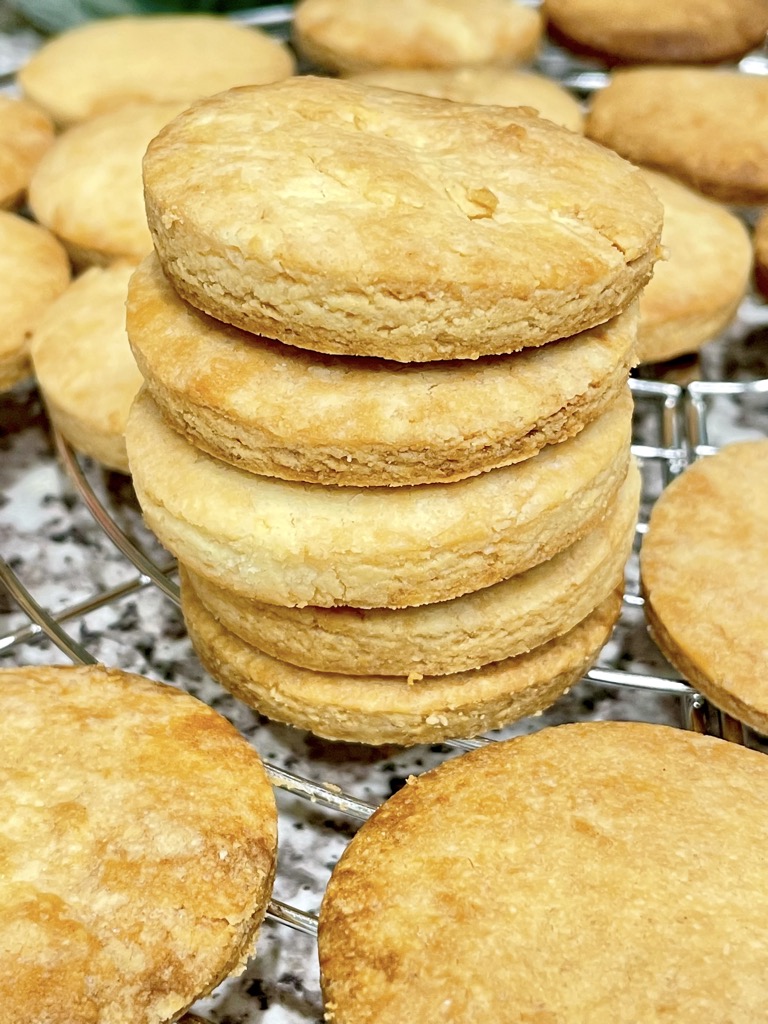
In our house, we love a good biscuit. For the little ones, chocolate chip cookies and simple sugar cookies are high up the list. Us older ones appreciate a good digestive biscuit or shortbread with our afternoon tea and coffee. I often find myself forcing the first shortbread onto the kids, only for the little feet to keep running into the kitchen until the jar is empty.
Especially in those colder months, a good classic almond flour shortbread biscuit recipe without egg is a must make. With its buttery texture and crispy edges, they are an easy delight to make on the side. While it‘s not quite Christmas yet, I will most certainly have a few shortbread recipes on rotation during the festive season. This one being one of them.
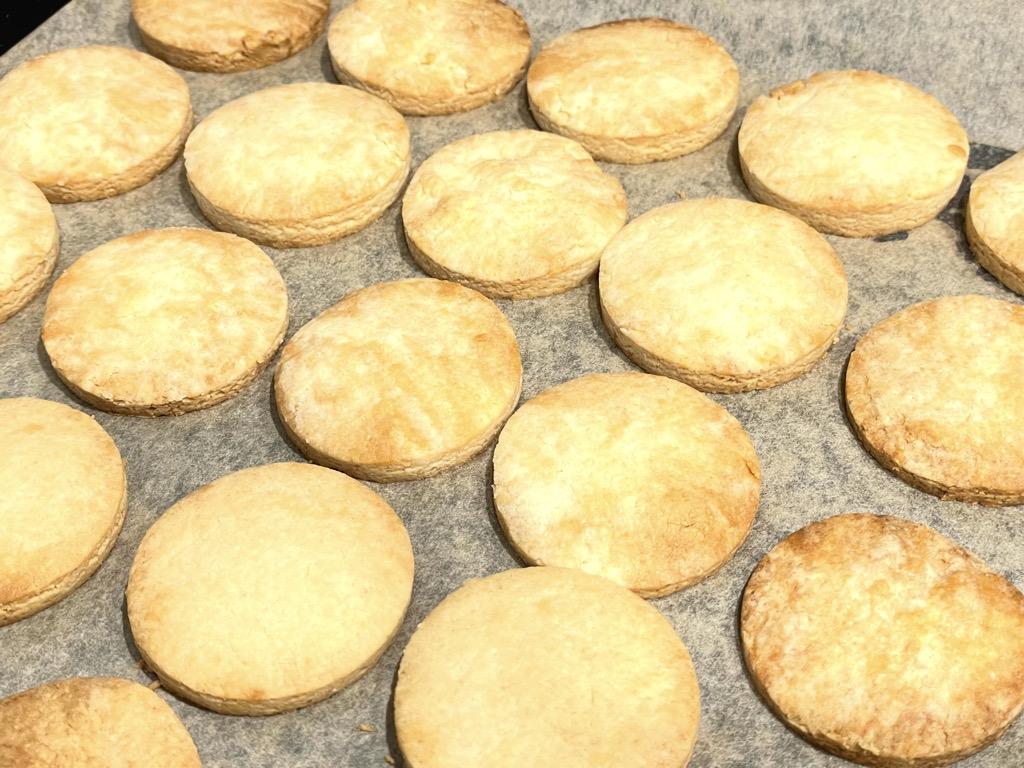
Classic almond flour shortbread biscuit recipe without egg ingredients
Almond flour, also known as almond meal, gives these shortbreads a beautiful, nutty flavour. It also allows us to reduce a little bit of butter and leverage the almonds‘ natural oils instead.
All-purpose flour helps us bring the shortbread dough together a little more, and makes it less crumbly
Cornstarch, to help bind the dough
Caster sugar – we want super fine sugar to create a smooth dough, and even smoother biscuits
Butter, for the rich, buttery texture and delicious flavour. I use unsalted butter in all of my recipes to have full control of the amount of salt I add.
Honey, to enhance the delicious flavours and sweeten our biscuits naturally
Salt, to balance out our flavours
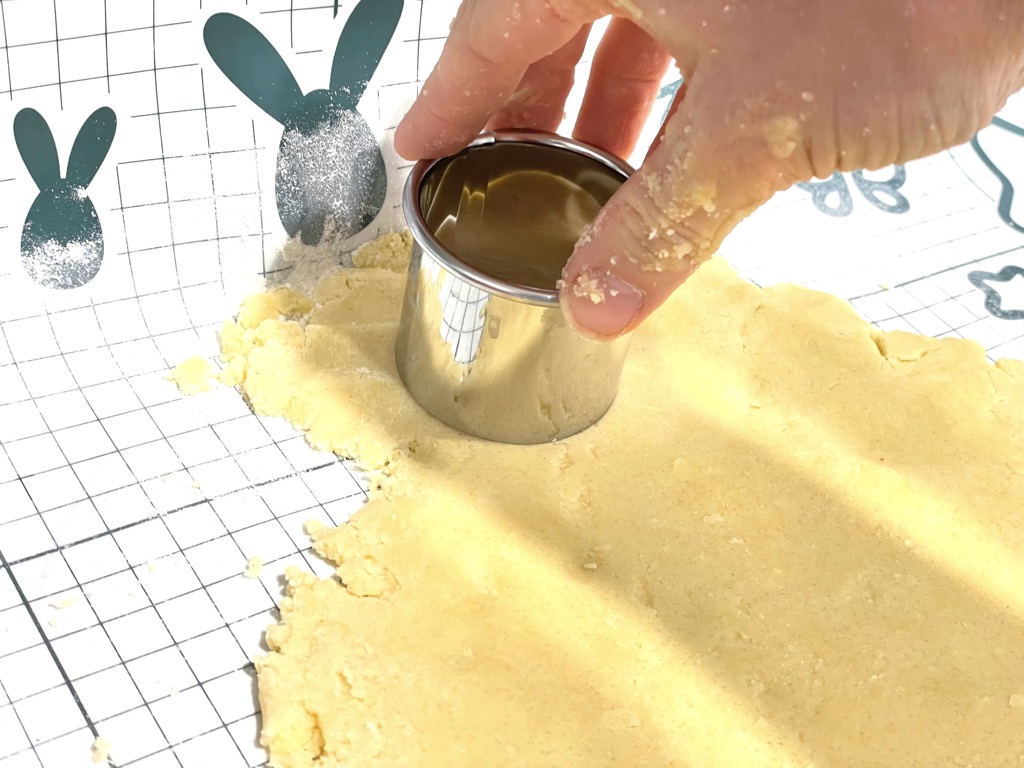
How to make my classic almond flour shortbread biscuit recipe without egg
This classic almond flour shortbread biscuit recipe without egg is super easy to make and should quickly become one of your go to recipes.
Get started by pre-heating your oven to 200C / 400F.
We will make the dough using our hands, so grab yourself an apron and get a large mixing bowl ready.
Add the almond flour, sugar and salt to the bowl and give them a brief whisk with your hands. Sift the flours into the bowl and gently combine them with your other ingredients.
Cut the butter into small pieces and add it to the bowl. I always feel that small pieces make it much easier to rub my butter into the flour. Using your fingers, rub the butter into the flour the way you would separate a plastic bag. Keep rubbing the butter into the flour mixture until you have an even consistency across the dough.
Add the honey and knead your dough to fully integrate it.
Lightly flour a large chopping board or your kitchen bench. Place your dough onto it and slightly knead until all ingredients are fully combined. Then, roll out the dough to about 1cm / 1/2in thickness.
Your dough may be quite soft at this point, which is why we‘ll place it in the fridge for the next 15 minutes. This makes it easier to handle when cutting out your biscuits.
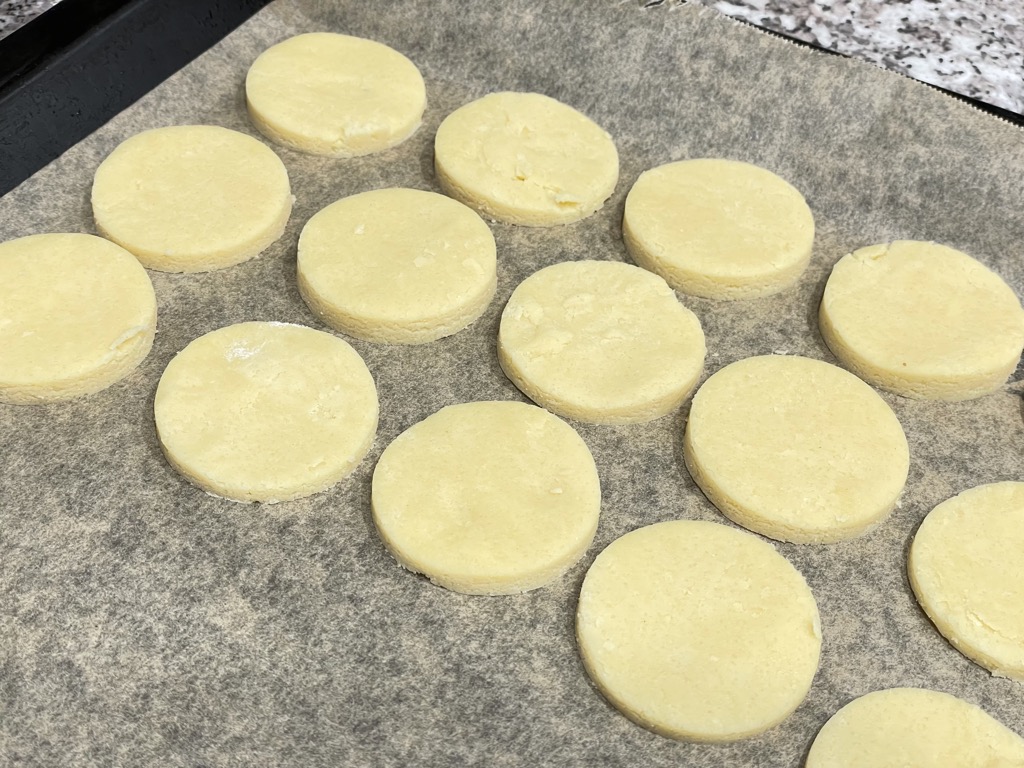
Once cooled and using your favourite cookie cutters, cut the dough into individual biscuits. You will need to knead, roll and cut the dough over and over again with any remaining dough from previous cutouts. Repeat this process until all dough has been used up.
Tip: To get your shortbreads from bench to oven as soon as possible, use a sharp knife and cut the dough into squares or rectangles when rolled out.
Place all shortbreads onto a taking tray layered with parchment paper or a silicone mat and place in the oven. Bake for 15 minutes or until golden.
More sweet treats
If you love my classic almond flour shortbread biscuit recipe without egg, give these recipes a try next:
Sourdough oatmeal Choc Chip cookies
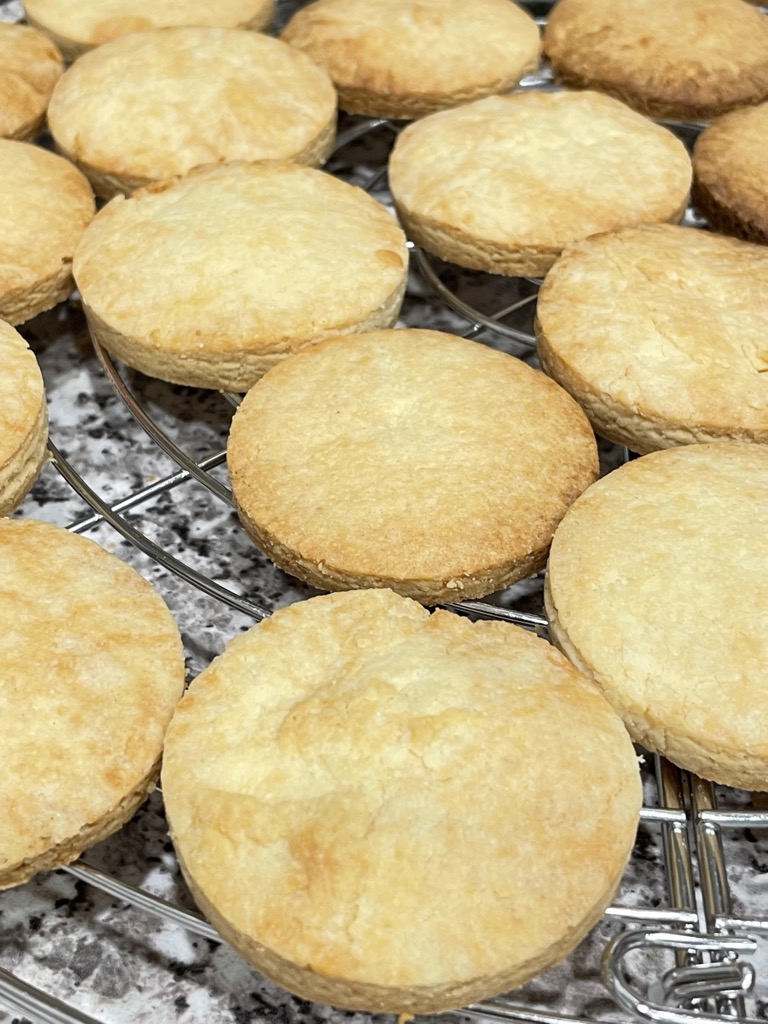
Tips for making my classic almond flour shortbread biscuit recipe without egg
If you‘re in a rush, use cold butter, if you have time, let it soften to room temperature. While this recipe is super quick to put together, shortbread biscuits dough can be quite delicate to handle. If the dough is too soft, your biscuits will not hold their shape, which is why many recipes recommend to chill the dough before shaping. While I often follow this recommendation, I have found my dough to be perfectly manageable right away if I use cold butter instead of soft butter. This often allows me to skip the step of chilling the dough, getting me a good 10-15 minutes closer to enjoying a delicious shortbread.
Thickness determines texture and baking time. Shortbreads typically have a light golden colour and buttery texture. To achieve this, your biscuits need a certain thickness and must not be left in the oven for too long. You will usually find the sweet spot to be around the 1cm / 1/2 in thick, needing to be baked between 10 and 15 minutes. Thinner dough and longer baking times result in crunchier biscuits, while thicker dough and shorter baking times can result in softer biscuits that easily break apart.
Frequently asked questions
Is almond meal the same as almond flour for baking?
Almond meal and almond flour are commonly used as an interchangeable term. It is a great flour alternative in gluten free baking and offers a light, fluffy texture to cakes and cookies alike. Initially, recipes suggest to swap standard flour and almond meal on a 1:1 ratio, however you will notice that batters and doughs containing almond meal are more liquid than their flour based counterpart. Using a little less liquid or increasing the amount of almond flour used in a recipe often helps in achieving the desired texture.
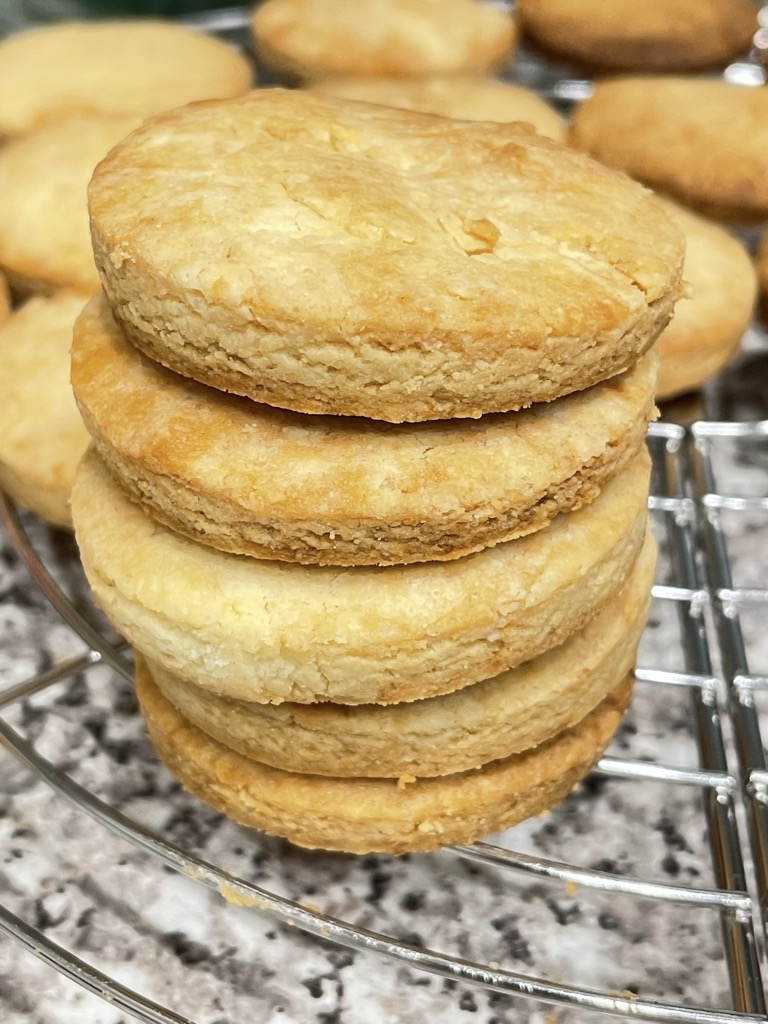
Is shortbread suitable for vegetarians?
Given shortbread does not contain any meat, it is absolutely suitable for vegetarians. For vegans, I would suggest to substitute butter for a plant based alternative, such as a plant based margarine. Opt for a buttery texture option wherever possible, to get as close to the original recipe‘s ingredients texture as possible.
Why doesn‘t shortbread have eggs?
Shortbread is known to be crumbly and delicious. It melts in your mouth when you take the first bite and leaves a delicious trail of crumbs to pick at after it has been devoured. The delicious texture is achieved by skipping the egg. You might ask yourself why. Adding egg binds the ingredients and forms a much more crunchy type of cookie. Even though it will still be delicious, the biscuit no longer melts in your mouth. The traditional shortbread should therefore never contain eggs.
What can I use to make cookies if I don‘t have an egg?
Are you baking and have found yourself out of eggs? Fear not, you can still finish your creation. Very latest since the rise of mainstream veganism, egg substitutes have become much more well known. The best thing, they‘re often readily available and quite possibly already stocked in your kitchen. Some of the most common substitutes are apple sauce or mashed banana, as they‘re common staples in peoples‘ kitchen. Other options are silken tofu or yoghurt, which is one of my personal favourites due to its delicious flavour addition.
What are common mistakes when making shortbread?
A common mistake when making shortbread is to get overly excited and over-work the dough. Unlike baking cakes and cookies, where recipes often ask for extended mixing times for certain ingredients, shortbread dough is best handled as swiftly as possible. Retaining a few small clumps does not harm the recipe in the slightest, but makes the shortbreads even more crumby. As the butter gets softer throughout the kneading process, many are also tempted to increase the amount of flour used. This is another common mistake, as it will cause the buttery texture to dry out. Allowing the kneaded dough to rest and chill in the fridge is a simple way to regain a firmer consistency, ready for shaping.
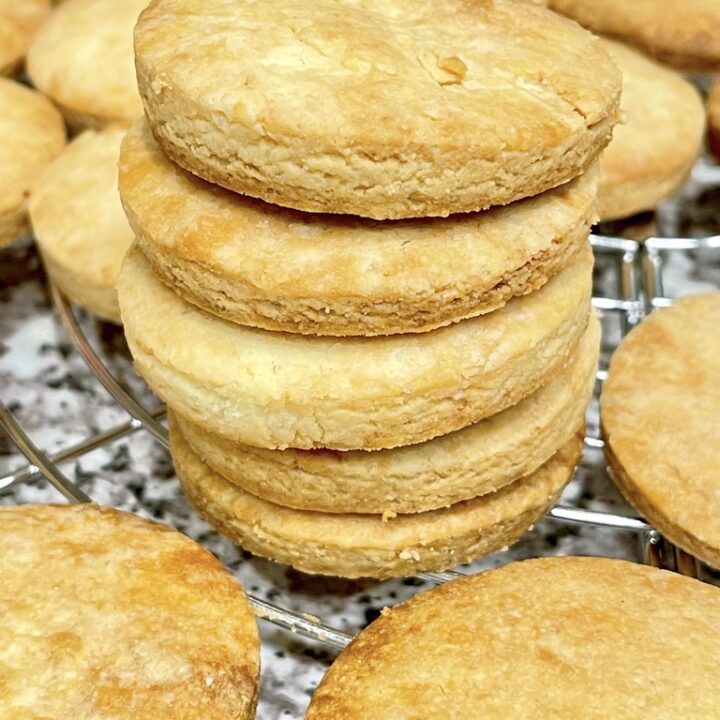
Classic almond flour shortbread biscuit recipe without egg
These classic almond flour shortbreads are deliciously buttery and will melt in your mouth. A perfect addition to your afternoon cup of tea.
Ingredients
- 1/2 cup almond meal
- 1 cup all purpose flour
- 1/2 cup cornstarch
- 1/4 tsp salt
- 1/4 cup caster sugar
- 125g butter
- 2 tbsp honey
Instructions
Get started by pre-heating your oven to 200C / 400F.
We will make the dough using our hands, so grab yourself an apron and get a large mixing bowl ready.
Add the almond flour, sugar and salt to the bowl and give them a brief whisk with your hands. Sift the flours into the bowl and gently combine them with your other ingredients.
Cut the butter into small pieces and add it to the bowl. I always feel that small pieces make it much easier to rub my butter into the flour. Using your fingers, rub the butter into the flour the way you would separate a plastic bag. Keep rubbing the butter into the flour mixture until you have an even consistency across the dough.
Add the honey and knead your dough to fully integrate it.
Lightly flour a large chopping board or your kitchen bench. Place your dough onto it and slightly knead until all ingredients are fully combined. Then, roll out the dough to about 1cm / 1/2in thickness.
Your dough may be quite soft at this point, which is why we‘ll place it in the fridge for the next 15 minutes. This makes it easier to handle when cutting out your biscuits.
Once cooled and using your favourite cookie cutters, cut the dough into individual biscuits. You will need to knead, roll and cut the dough over and over again with any remaining dough from previous cutouts. Repeat this process until all dough has been used up.
Place all shortbreads onto a taking tray layered with parchment paper or a silicone mat and place in the oven. Bake for 15 minutes or until golden.
Notes
- To get your shortbreads from bench to oven as soon as possible, use a sharp knife and cut the dough into squares or rectangles when rolled out.
- If you‘re in a rush, use cold butter, if you have time, let it soften to room temperature. While this recipe is super quick to put together, shortbread biscuits dough can be quite delicate to handle. If the dough is too soft, your biscuits will not hold their shape, which is why many recipes recommend to chill the dough before shaping. While I often follow this recommendation, I have found my dough to be perfectly manageable right away if I use cold butter instead of soft butter. This often allows me to skip the step of chilling the dough, getting me a good 10-15 minutes closer to enjoying a delicious shortbread.
- Thickness determines texture and baking time. Shortbreads typically have a light golden colour and buttery texture. To achieve this, your biscuits need a certain thickness and must not be left in the oven for too long. You will usually find the sweet spot to be around the 1cm / 1/2 in thick, needing to be baked between 10 and 15 minutes. Thinner dough and longer baking times result in crunchier biscuits, while thicker dough and shorter baking times can result in softer biscuits that easily break apart.

These sound so delicious! I love shortbread cookies with nuts and they are on my list to try.